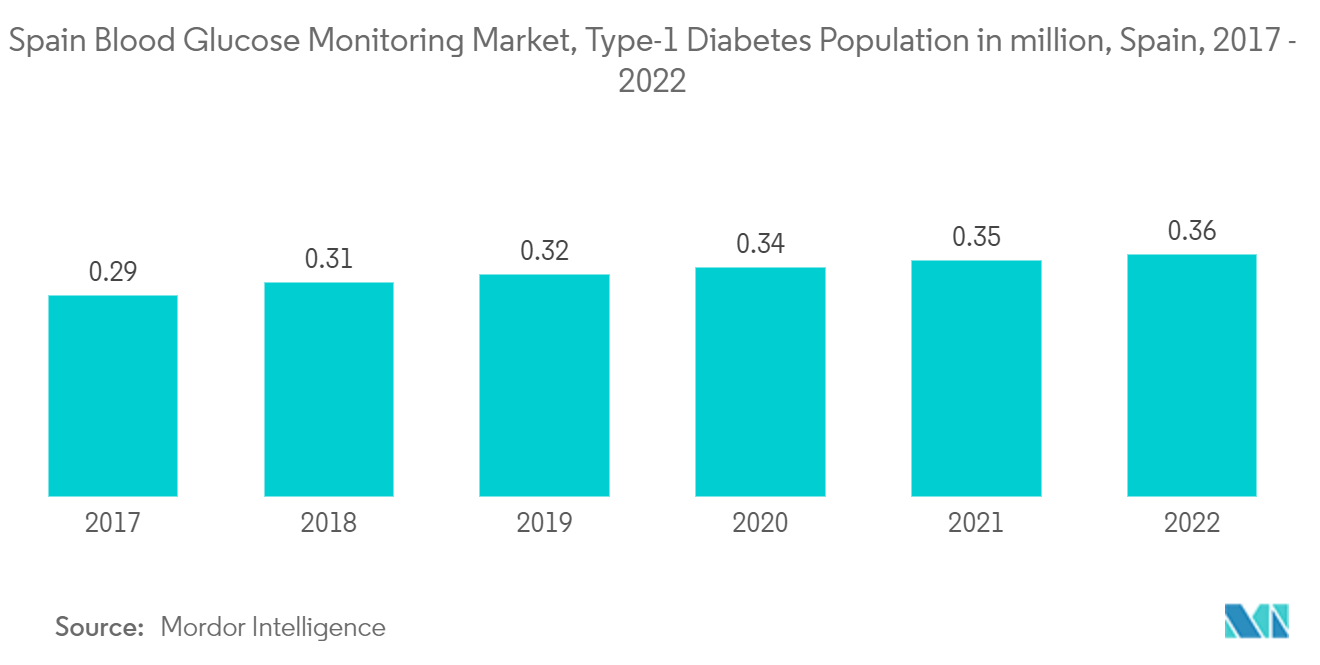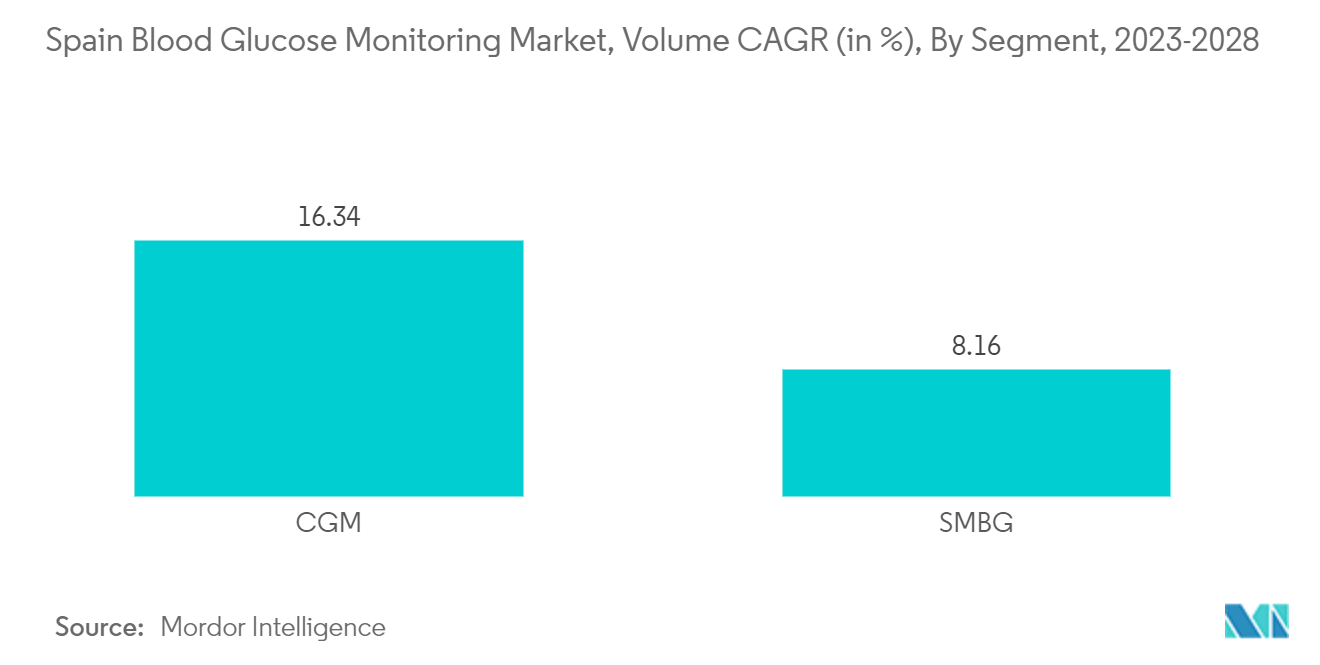Market Trends of Spain Blood Glucose Monitoring Industry
Increasing Type-1 diabetes population across Spain
Over the forecast period, the population of people with type 1 diabetes in Spain increased at a rate greater than 3%. In 2021, over 0.35 million people will live with type 1 diabetes. Diabetes is thought to affect up to 13.8% of adults in Spain, with approximately 6% having undiagnosed diabetes. Similar prevalence rates have been observed in Spain's five million-person Valencian Community. In this field, primary care physicians monitor most diabetic patients and work closely with endocrinologists to handle more complicated cases. Numerous studies have found that people with diabetes are more likely to have severe COVID-19 episodes, have poorer outcomes, and have a higher mortality rate. The SED expects the fatality rate to increase, as the mortality risk for the diabetic population in Spain is estimated to be around 7.3%, compared to 0.9%-3% for the non-diabetic population.
As a result of the factors above, the growth of the studied market in Spain is anticipated.

Continuous Glucose Monitoring Holds Highest CAGR in Spain Blood Glucose Monitoring Market.
The COVID-19 pandemic underscores the imperative of maintaining good glycemic control in patients with diabetes, as numerous observational studies have indicated that poorly managed diabetes is linked to an elevated risk of hospitalization and mortality from viral illnesses. The frequency of glucose level monitoring varies depending on the type of diabetes, which varies from patient to patient. Patients with Type-1 diabetes must regularly monitor their blood glucose levels to track their blood glucose levels and adjust insulin dosing accordingly. Modern CGM devices provide a comprehensive representation of blood glucose patterns and trends, in contrast to traditional glucose level checks at predetermined intervals. Additionally, contemporary continuous glucose monitoring devices can either retrospectively display blood glucose level trends by downloading data or provide a real-time depiction of glucose levels through receiver displays.
The use of CGM by Type-1 diabetic patients is much less as compared to Type-2 diabetic patients. However the expenditure of Type-1 diabetic patients on these devices is nearly double that of Type-2 diabetics. The newest CGM models, the Abbott Freestyle Libre and the Dexcom G6 overcame many technical barriers. However, high costs and uncertainties about their efficacy and necessity have kept CGM from being widely used by people with Type-2 diabetes. Continuous glucose monitoring devices are becoming cheaper with new technologies, like cell phone integration.


